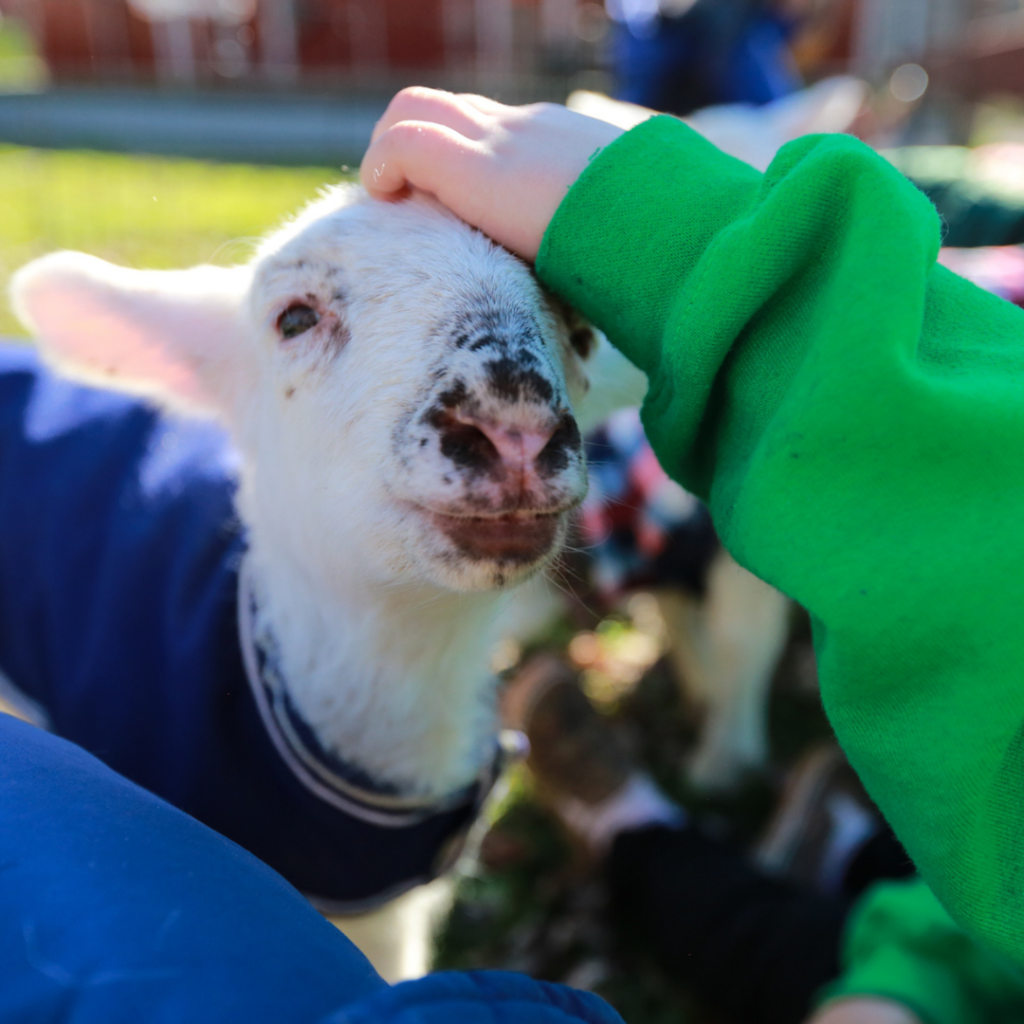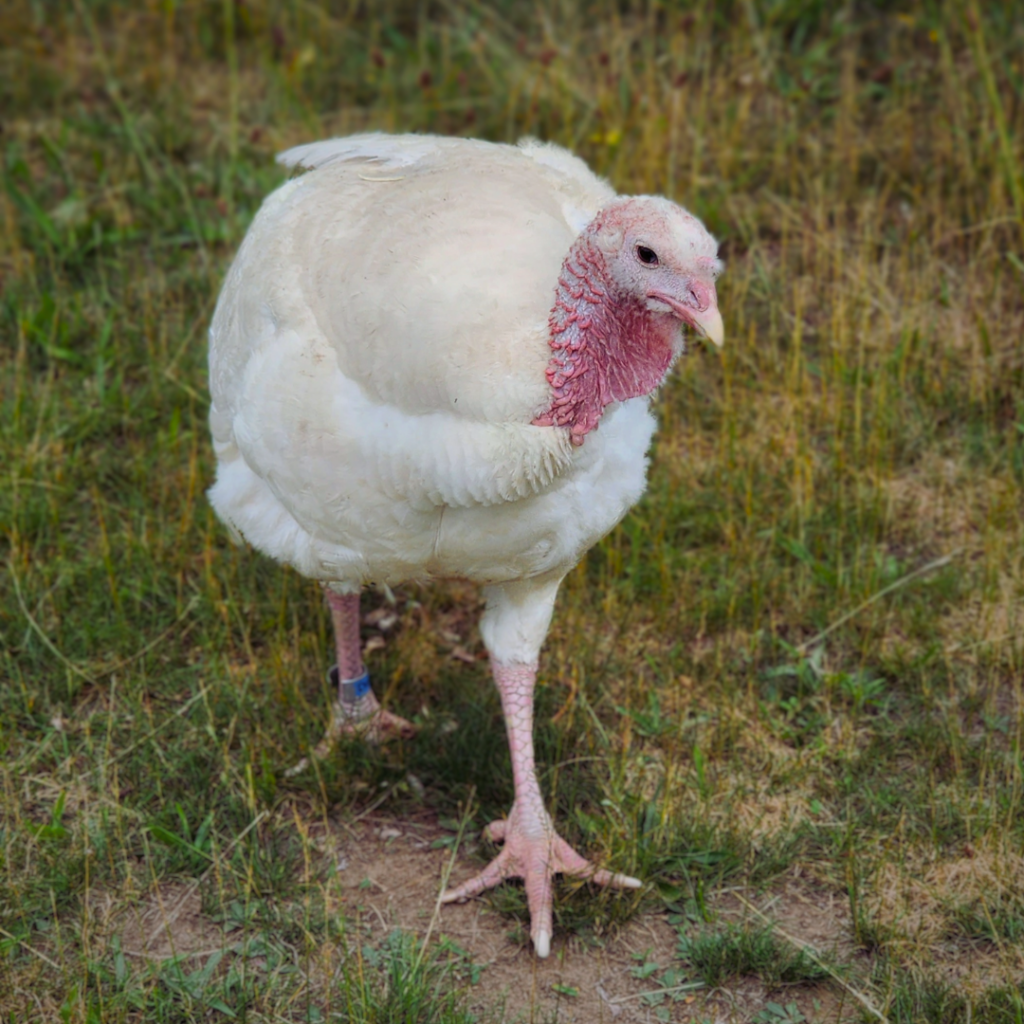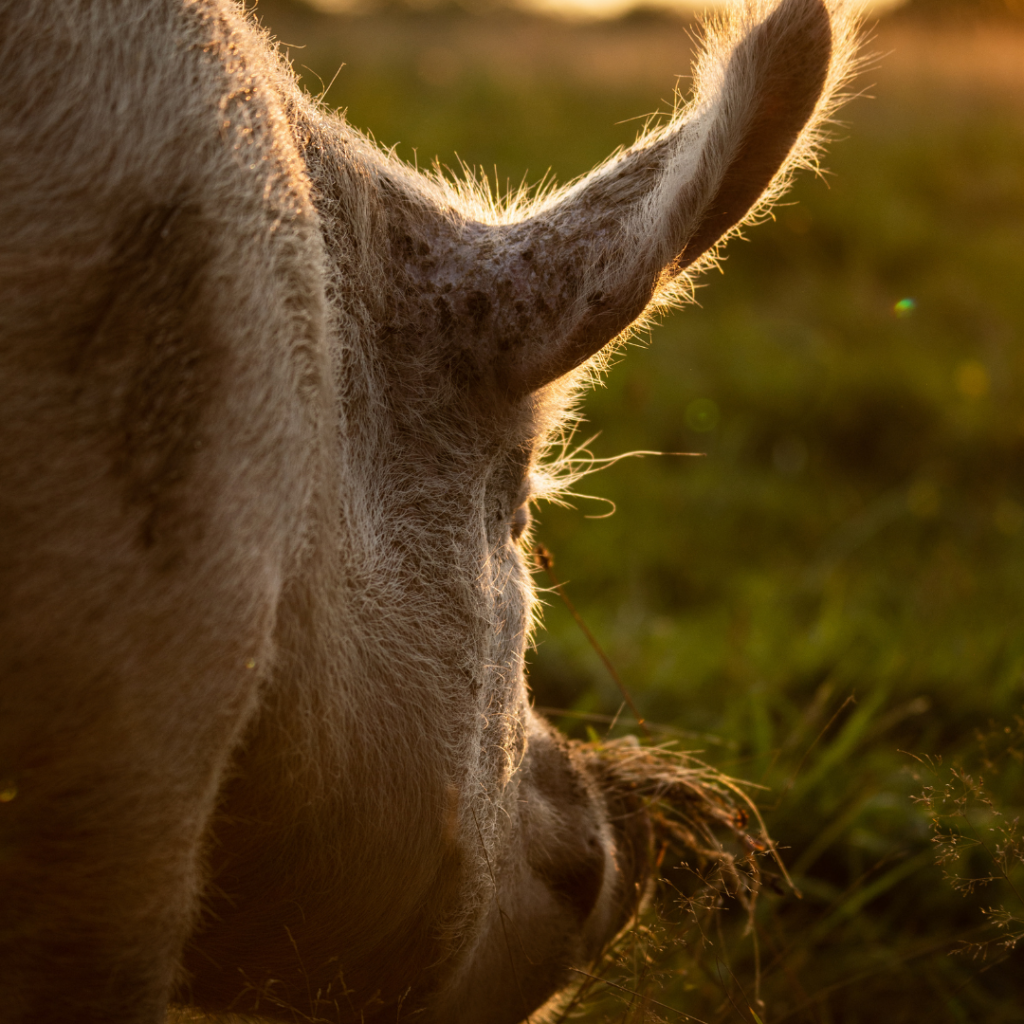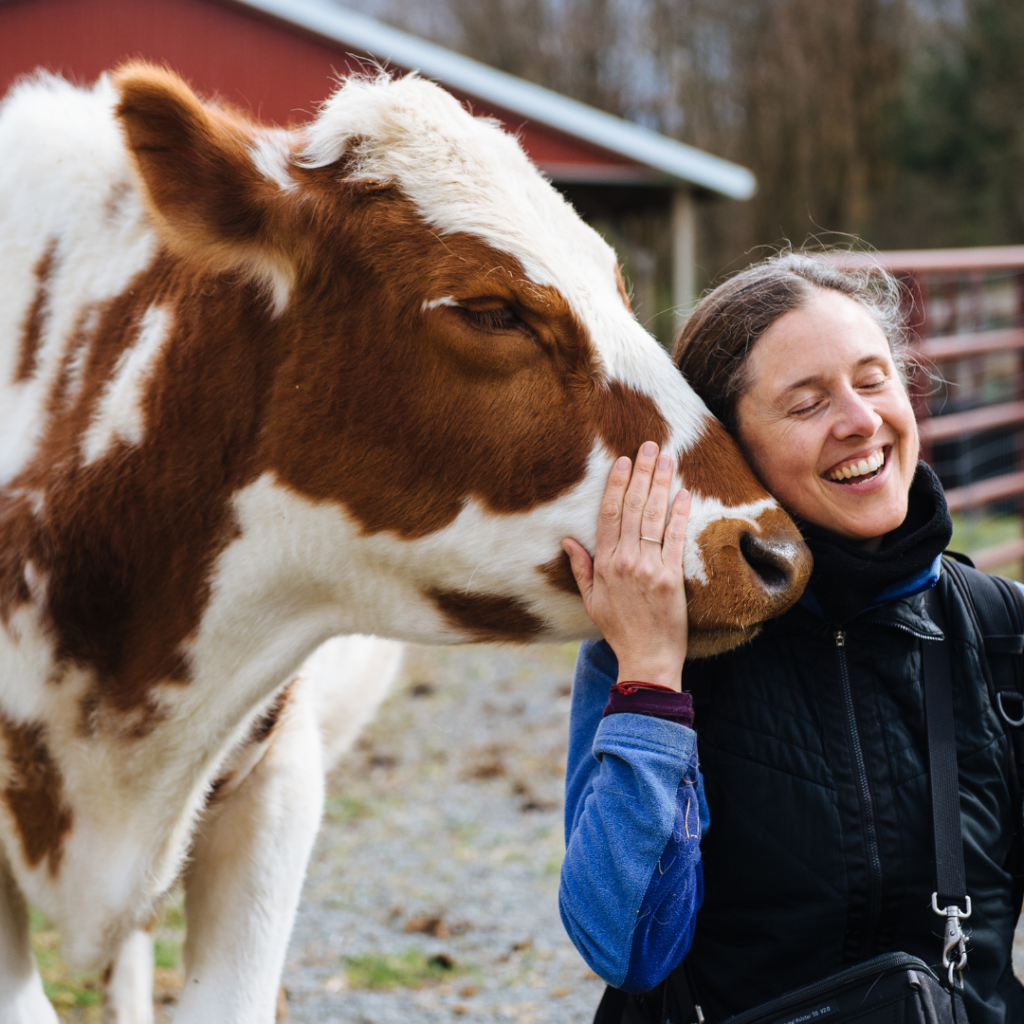
Resource Acknowledgement
The following resource was originally developed for The Open Sanctuary Project as part of Dr. Emily Tronetti’s dissertation project in pursuance of her Doctor of Education (EdD) through Antioch University and the Institute for Humane Education. Emily specializes in adult humane education and applied animal behavior, and is passionate about helping advocates and organizations cultivate compassionate coexistence through teaching about and supporting the agency and wellbeing of other animals. We are so grateful for her collaborative efforts and contributions to The Open Sanctuary Project.
This Resource is Part Two of a Fully-Downloadable Guide!
This resource is the second part of a fully-downloadable guide that was originally developed as a comprehensive resource to help sanctuary educators foster and teach about farmed animalA species or specific breed of animal that is raised by humans for the use of their bodies or what comes from their bodies. agency and consent in the context of sanctuary education and outreachAn activity or campaign to share information with the public or a specific group. Typically used in reference to an organization’s efforts to share their mission.. In our efforts to make larger resources like the fully-downloadable guide as accessible as possible in various formats, we broke it down into six individual parts/resources. If you’re interested in reading the third part of the original resource, “A Guide to Fostering Farmed Animal Agency in Sanctuary Education: Part Three”, please click here. If you’d like to access the fully-downloadable guide, please click here.
Non-Compassionate Sources
We at The Open Sanctuary Project disavow animal experimentation and any “use” of animals for human purposes. Because compassionate studies on valuing the personality, intelligence, and unique attributes of many nonhuman animals are rare, in this resource, we draw from existing sources that may be non-compassionate. Still, we may use the information we find to improve the lives of residents. We strive towards a future when compassionate, non-exploitative, and non-invasive research is the norm. In the meantime, we will work with what we have to help sanctuaries help animals as effectively as possible. You can read a little bit more about our non-compassionate source policy here.
Reflection Questions
Throughout this resource, you will notice questions in boxes like this. To get the most out of this guide, we encourage you to pause and reflect on each question and discuss them with your colleagues. To help with this, please click here for a list of the reflection questions and space for you to share your thoughts.
What is Agency?
Agency is the capacity of a living being to engage with their environments and to make choices for themselves based on their own preferences, needs, and desires (Blattner et al., 2020; Mellor et al., 2020). Some view agency as “embodied and relational,” meaning that it’s not only a quality of individuals but something that emerges from our relationships with others and our environment (Blattner et al., 2020, p. 2). Having agency means being able to express ourselves and shape the world according to our desires, but it doesn’t always require us to have explicit intentions. We often exercise agency in ways that are “spontaneous, intuitive, habitual, automatic, embodied, or semi-conscious” (Blattner et al., 2000, p. 4). Our ability to exercise agency with and without explicit intention is essential to living freely.

Reflection Questions
What does agency mean to you? In what ways does your current understanding of agency impact your work as a sanctuary educator?
Agency Expression
Agency expression across species includes deciding what our daily routines look like and who we want to spend our time with, amongst other things. These decisions and desires aren’t static; they can change from moment to moment. Important aspects of agency are to have the freedom to change your mind, to say no and to have these choices acknowledged and respected.
Agency plays an integral role in the overall well-being and health of animals, both human and nonhuman (Špinka & Wemelsfelder, 2011). Unfortunately, this is one reason why those in positions of power use the disregard and suppression of agency to oppress those deemed as “other.” In light of this, sanctuaries can play an important role in countering oppression by implementing agency-centered practices that promote the well-being of everyone, both nonhuman and human.
“[Other animals] need shelter and safety from physical and psychological threats, and an environment they can control. And like us, they… need to exercise control over their lives, make choices, do meaningful work, form meaningful relationships with others, and engage in forms of play and creativity. … Freedom is the key to many aspects of animal well-being. … To do better in our responsibilities toward [other] animals, we must do what we can to make their freedoms the fundamental needs we promote and protect, even when it means giving those needs priority over some of our own wants.”
(Bekoff & Pierce, 2017, p. 3)
While agency matters to all species, how that agency is expressed looks different depending on the species and the individual. It’s well established in both the sanctuary and scientific communities that no two chickens (nor any other species) are alike! For example, a study involving chickens demonstrated individual differences in what environments they preferred (Nicol et al., 2009, as cited in Špinka, 2019). All animals have unique likes and dislikes, and when these aren’t considered, it can negatively impact well-being.
Reflection Questions
How do you express your agency? How do the residents at your sanctuary express their agency?
Agency Denial
“Real freedom for [other] animals … would require a deep examination of our own behavior. It might mean we should change the way we treat and relate to [nonhuman] animals, not just to make cages bigger or provide new enrichment activities to blunt the sharp edges of boredom and frustration, but to allow animals much more freedom in a wide array of venues…. The bottom line is that in the vast majority of our interactions with other animals, we are seriously and systematically constraining their freedom to mingle socially, roam about, eat, drink, sleep, pee, poop, have sex, make choices, play, relax, and get away from us”
Bekoff & Pierce, 2017, p. 6

Unfortunately, many animals that live in captivity have never truly experienced freedom. Through the denial or suppression of their agency, they’re prevented from having control over their lives, which can significantly compromise their physical and emotional well-being (Bekoff & Pierce, 2017; Špinka, 2019). In sanctuaries, we try to provide our residents with enriched lives and aim to foster feelings of freedom as much as we can. However, there are inherent challenges to allowing residents full agency in a sanctuary. As a result of the many significant impacts domestication and selective breeding have had on farmed animal species, their care requires ongoing human intervention in various ways, including varying levels of captivity. By bringing awareness to these realities and challenges, we can uncover strategies to support resident agency within sanctuary settings to maximize their overall well-being, health, and safety. Further on in this resource, we’ll look more closely at some of these from an educational standpoint, but particularly relevant in the context of sanctuary education is the need for animals to have some control over their social interactions.
Captive animals benefit from having control over:
- When they interact with other beings
- Who they interact with
- How that interaction occurs, including type of interaction, duration, and location
This shouldn’t only include interactions with other nonhuman animals. As much as we can, we should let other animals take the lead in our interactions with them. This brings us to our next topic…consent.
Considering Consent

Consent is directly linked to agency in that, in order to support the agency of another, we must obtain their consent to engage with them. Generally, consent refers to giving permission, approval, or agreement (Merriam-Webster, 2024). It’s typically associated with interactions between humans and isn’t traditionally considered in the context of other species (Fennell, 2022; E. Jones, 2022). However, other animals “do, in fact, offer consent (assent), or denial of consent (dissent), through their emotions, preferences, behaviours, and physical/physiological states” (Fennell, 2022, p. 1).
Even in humans, consent and non-consent frequently occurs nonverbally. For example, when greeting another human, we often make decisions about whether or not we’re going to hug, shake hands, or wave based on the other person’s body language and behavior. Are they shifting their body away from us? Or are they moving closer? Are their arms crossed? Are they making eye contact or looking away? Are they smiling? Is it a genuine smile? Assessing this information typically occurs subconsciously, but it often shapes how we respond.
Reflection Questions
When greeting another human, how do you express your consent or lack thereof to physical contact? How do you tell if another human is consenting or not?
When it comes to interacting with animals of other species, interpreting consent and non-consent doesn’t come as naturally to us. Many humans struggle with reading the body language of nonhumans, even those we spend the most time with, like dogs and cats (Demirbas et al., 2016; de Mouzon et al., 2024).
A lack of knowledge about the body language of other species impacts how each interaction with them unfolds (E. Jones, 2022). If we can’t distinguish when they’re withholding consent, but we or our visitors continue to try and engage with them, this can erode the residents’ trust in us and in other humans over time. Additionally, when any animal doesn’t have their choices acknowledged and respected, this may result in negative psychological impacts, such as reduced feelings of safety and increased anxiety (McMillan, 2020; Mellor et al., 2020). This may lead to an animal resorting to behavior that’s dangerous to humans, such as biting or headbutting, in order to make themselves heard.
So, striving for consent-based interactions with other beings is vitally important. To do so, it can be beneficial to know about their species-typical behaviors and communicative cues (E. Jones, 2022). We must also acknowledge and strengthen our understanding of the individual animals we’re interacting with. This includes checking our assumptions. Our biases about certain species, breeds, ages, sexes, etc., may shape how we perceive individual behavior. We might also make assumptions about what other animals want and need (Donaldson & Kymlicka, 2015). This is especially true for the animals we have close relationships with. For example, if a sheep we know well becomes stressed, we might assume they need to be comforted through touch. While this can be true for some individuals, it’s not true for all. Nor is it true for every individual in every stressful circumstance. Sometimes, touching a stressed animal, even when we have the kindest intentions, can make them more stressed. This speaks to why it’s crucial to pay attention to what other animals are communicating through their body language and behavior. Determining if someone is consenting to an interaction or not is learning how they say, in their own unique way, “yes” and “no” (E. Jones, 2022). Then, perhaps the hardest part for us humans is respecting their choice. We might be tempted to force interactions with animals because we think it won’t be “that” harmful. But we’re limited in our ability to truly understand the emotional harmThe infliction of mental, emotional, and/or physical pain, suffering, or loss. Harm can occur intentionally or unintentionally and directly or indirectly. Someone can intentionally cause direct harm (e.g., punitively cutting a sheep's skin while shearing them) or unintentionally cause direct harm (e.g., your hand slips while shearing a sheep, causing an accidental wound on their skin). Likewise, someone can intentionally cause indirect harm (e.g., selling socks made from a sanctuary resident's wool and encouraging folks who purchase them to buy more products made from the wool of farmed sheep) or unintentionally cause indirect harm (e.g., selling socks made from a sanctuary resident's wool, which inadvertently perpetuates the idea that it is ok to commodify sheep for their wool). that forced interactions may cause. Of course, there may be circumstances, such as urgent medical care, where we aren’t able to acknowledge and abide by their non-consent. But in most situations, we must adopt a more mindful, individualized, consent-based approach to interacting with other animals. This is a critical component in supporting their agency. We’ll discuss this further soon.
Consent-based interactions include:
- Acknowledging the individual
- Paying attention to what they are communicating with us
- Respecting choice and not forcing interactions
Interested in Learning More?
Interested in learning more about fostering farmed animal agency and consent in sanctuary education? Please click here to read the third part of this guide! For a deeper look at how agency and consent are defined, please check out “An Introduction to Fostering Agency in Farmed Animals at Your Animal Sanctuary”.
We’d Love to Hear from You!
This guide is a living document that we plan to make continual changes to as we get feedback from sanctuary staff and volunteers who have implemented what they’ve learned from this guide into their sanctuary education practices. In our efforts to ensure this guide is as helpful as possible to sanctuary staff, volunteers, visitors, supporters, and, most importantly, the residents, we’d love to hear how this guide has impacted your work. If you have feedback, please contact us here!
Sources
A Guide to Fostering Farmed Animal Agency in Sanctuary Education | The Open Sanctuary Project
Time to Thrive: The Importance of Enrichment | The Open Sanctuary
Fostering Critical Thinking at Your Animal Sanctuary | The Open Sanctuary Project
The 2020 Five Domains Model: Including Human–Animal Interactions in Assessments of Animal Welfare | David J. Mellor, Ngaio J. Beausoleil, Katherine E. Littlewood, Andrew N. McLean, Paul D. McGreevy, Bidda Jones, & Cristina Wilkins (Non-Compassionate Source)
Environmental Challenge and Animal Agency | Marek Špinka & Françoise Wemelsfelder (Non-Compassionate Source)
Animal Agency, Animal Awareness and Animal Welfare | Marek Špinka (Non-Compassionate Source)
Animal-Informed Consent: Sled Dog Tours as Asymmetric Agential Events | David A. Fennell (Non-Compassionate Source)
The Mental Health and Well-Being Benefits of Personal Control in Animals | F. D. McMillan
Farmed Animal Sanctuaries: The Heart of the Movement? | Sue Donaldson & Will Kymlicka
Non-Compassionate Source?
If a source includes the (Non-Compassionate Source) tag, it means that we do not endorse that particular source’s views about animals, even if some of their insights are valuable from a sanctuary perspective. See a more detailed explanation here.








